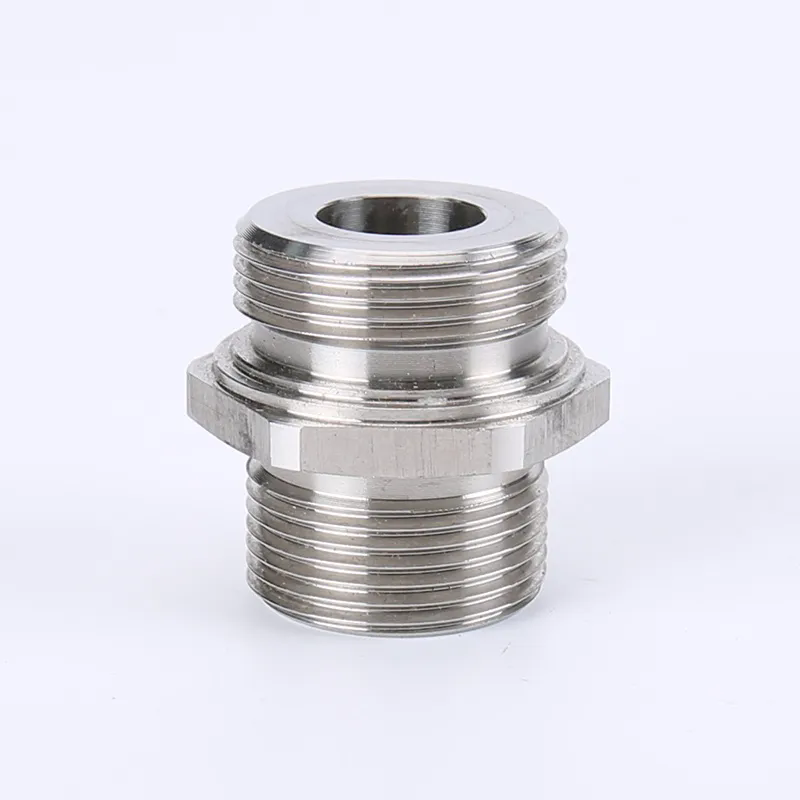What Role Does a Pump Valve Type Joint Play in Fluid Control Systems?
2024-11-08
In the complex world of fluid handling and control systems, the components that manage the flow, pressure, and safety of liquids or gases are of utmost importance. Among these components, the pump valve type joint plays a crucial role in ensuring the smooth and efficient operation of pumping systems. But what exactly is a pump valve type joint, and why is it so important in fluid control applications?
Understanding the Pump Valve Type Joint
A pump valve type joint is a specialized mechanical component used in fluid systems to regulate the flow of liquids or gases through pumps and valves. These joints are designed to connect pipes or tubing in such a way that they can withstand the pressure and forces associated with high-fluid flow systems, while also allowing for the smooth operation of valves, pumps, or other fluid control devices.
Typically, these joints combine the features of both a pump and a valve, providing a secure and functional link between different sections of a fluid system. Depending on the specific application, the joint may include features that allow for easy disconnection, adjustment of pressure, or directional flow control.
The Importance of Pump Valve Type Joints
1. Ensuring Pressure Control
One of the main reasons pump valve type joints are so crucial is their ability to handle and control pressure. In fluid systems, maintaining the proper pressure is essential to prevent damage to pipes, pumps, and valves. These joints help regulate pressure by allowing safe passage for the fluid while also providing mechanisms to control or reduce pressure in the system. By doing so, they protect sensitive equipment from overpressure, ensuring longevity and reducing maintenance needs.
2. Seamless Fluid Flow
Fluid systems rely on a continuous, efficient flow of liquids or gases. A pump valve type joint ensures that fluid can pass through the system without obstructions, leaks, or interruptions. By providing a reliable and tightly sealed connection, these joints minimize the risk of spills and ensure that the system operates smoothly, even under high-flow conditions.
3. Versatility Across Applications
Pump valve type joints are incredibly versatile and used in a wide range of industries, including oil and gas, pharmaceuticals, food and beverage, and water treatment. In each of these industries, the requirements for fluid control systems can vary greatly. These joints are available in different materials, sizes, and configurations to meet specific application needs, ensuring that each fluid handling system operates efficiently and safely.
4. Improved Safety
Safety is always a top priority in any fluid control system. Whether it's a high-pressure pump system in an industrial setting or a valve controlling fluid flow in a laboratory, ensuring that the system remains leak-proof and secure is essential. A well-designed pump valve type joint helps to minimize the risk of leaks or failures, reducing the chances of dangerous accidents, spills, or system malfunctions. In critical applications, the safety provided by these joints is invaluable.
5. Easy Maintenance and Replacement
Maintenance is an inevitable part of any mechanical system, and when it comes to fluid handling systems, quick and efficient repairs are necessary to minimize downtime. Pump valve type joints are designed to be easily maintained and replaced when needed. Many of these joints feature simple mechanisms for disconnection and reconnection, making it easier for technicians to perform necessary checks, maintenance, and repairs without interrupting the entire system.
6. Preventing Backflow
Some pump valve type joints are specifically designed to prevent backflow within a fluid system. Backflow occurs when the direction of the fluid flow is reversed, which can lead to contamination or other operational issues. A properly designed valve joint can incorporate one-way mechanisms that ensure fluid only flows in the intended direction, safeguarding the integrity of the system and ensuring that contaminants don’t enter sensitive areas.
7. Reducing Wear and Tear
Continuous operation of fluid systems can lead to wear and tear on various components. Pump valve type joints, especially those made from durable materials like stainless steel, brass, or special alloys, can withstand the stresses of frequent fluid passage and high-pressure conditions. Their durability ensures that they last longer, requiring fewer replacements and reducing overall operational costs.
Common Types of Pump Valve Type Joints
1. Flanged Joints: These are often used in large industrial fluid systems. Flanged joints are easy to install and provide a strong, leak-proof connection between pipes and valves.
2. Threaded Joints: Threaded pump valve type joints are ideal for smaller systems or applications where quick disconnection is necessary. These joints rely on threaded connections to secure components in place.
3. Union Joints: These are designed for easy disassembly and are commonly used in systems that require frequent maintenance or cleaning. Union joints can be used in various pump and valve systems to provide flexibility and easy removal.
4. Compression Joints: In systems where space is a concern, compression joints are commonly used. These joints utilize a compression fitting to secure the pipes or tubing, providing a tight seal without requiring welding or threading.
5. Check Valve Joints: These joints allow for fluid flow in only one direction, preventing backflow and ensuring that the pump operates in a safe and efficient manner.
Applications in Different Industries
1. Oil and Gas: In oil rigs, refineries, and pipelines, the pump valve type joint is essential for controlling the flow of crude oil, natural gas, or refined products. Their ability to manage high pressure and corrosive fluids makes them ideal for this industry.
2. Water Treatment: Pump valve type joints are widely used in water treatment plants where the flow of water must be carefully controlled. These joints prevent leaks and ensure that water flows efficiently through filtration and purification systems.
3. Pharmaceutical and Food Processing: In pharmaceutical and food processing industries, cleanliness and contamination prevention are paramount. Pump valve type joints made from food-grade materials ensure that fluids can pass through without introducing contaminants, ensuring product quality and safety.
4. Chemical Processing: In chemical industries, the safe transport of aggressive or hazardous chemicals requires joints that can withstand corrosion and high pressure. Specialized pump valve type joints help mitigate the risks associated with such materials.
Conclusion
A pump valve type joint is a fundamental component in any fluid control system, offering a range of benefits from pressure regulation to improved safety and operational efficiency. Whether in industrial, pharmaceutical, or water treatment systems, these joints provide the secure, leak-proof, and versatile connections needed for optimal system performance. By understanding the role these joints play, industries can ensure that their fluid systems operate smoothly, efficiently, and safely—protecting both equipment and people in the process.



